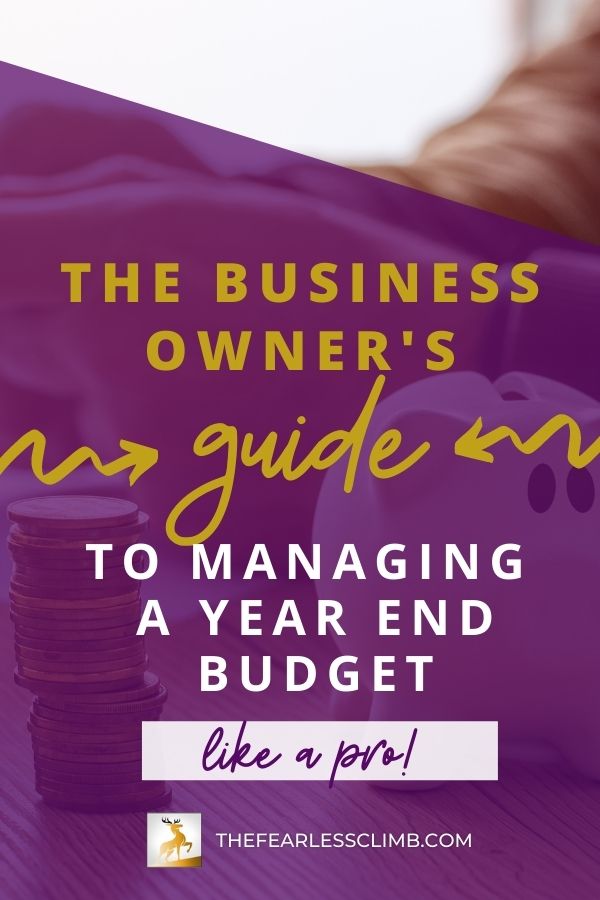The Business Owner's Guide to Managing a Year End Budget Like a Pro

By: Kathleen Ries-Jubenville | Read time: 4 minutes
If you want to manage a budget like a pro, you need to know what a budget is, so let's start with that!
A BUDGET is typically created near the end of the year to set goals and expectations for the income and expenses the company wants to achieve in the upcoming year. A budget is for internal business management purposes only.
This is different from a PROJECTION which is for lenders and investors to show what your company expects to achieve over the next several years.
A BUDGET report shows the company's income and expense goals on a monthly basis. This provides a baseline to compare your actual results against. Ideally, you compare your budget to your actual results monthly and make adjustments to your business strategies to focus on achieving your goals. Please keep in mind, the budgeted amounts were your expectations based on what you knew at one point in time. As your business changes throughout the year, feel free to set new goals and update your budget! The purpose of this is to provide you with a management tool that keeps you aware of how things are going so you can keep things on track. So set it up to work for you!
Here's a 3-step process for creating a budget for your business:
1. Your budget for next year will be based on your financial reports from this year, so the first step of creating your budget is to review your current year's financial statements and correct any errors. If you don't know how to do any or all of the following steps, ask your bookkeeper to help you. If you don't have a bookkeeper, download my free eBook here to find out how to get the help you need! Here are the steps to verify the accuracy of your financial reports:
a. Make sure all your balance sheet accounts have been reconciled and are up to date.
b. Research old, outstanding checks and consider voiding and re-issuing them.
c. Follow-up on old, unpaid customer invoices to collect payment or write them off as bad debt.
d. Confirm all your tax liabilities have been paid, such as corporate taxes, payroll taxes, and sales taxes.
e. Reclassify any transactions recorded to the wrong account.

CLICK HERE TO DOWNLOAD YOUR FREE EBOOK!
2. The second step of creating your budget is to copy this year's financial reports into a program to make adjustments for your goals in the upcoming year. You will need to export the current year's "Profit & Loss" report, by month, to an Excel spreadsheet. Or, better yet, some accounting software programs like QuickBooks, will allow you to create a budget based on the current year's data within the program. This makes it a lot easier to run a report every month that automatically compares the budget to your actual results.
3. The final step to create a budget is to adjust this year's numbers to reflect your goals for next year. To do this, just review each income and expense line item and do one of the following to create a monthly budget for that account:
a. If you expect the amounts to be the same next year as they were over the past year, don't make any changes.
b. If you expect the amounts to change in the upcoming year, you have a couple of options:
- Manually adjust the specific amount in each month. For example, if you cancelled a monthly subscription, you could zero out the pre-filled amount in every month.
- Increase or decrease the pre-filled amount by an estimated percentage. For example, if you think your sales might increase 10% every month, build that formula into the budget calculation each month.
*** Remember, these are just estimated goals, so don't take too much time or stress too much about each number. You are just creating a guide to help you evaluate your progress every month. ***
Now that you have created your budget, use it! After all your accounts are reconciled each month, run a "Profit & Loss - Budget vs. Actual" report and see how you are doing. Use this to make informed business decisions going forward!
If you need help with any of this, I recommend working with a bookkeeper experienced in small business accounting. To find out how to get the help you need, download my free eBook here!
The Fearless Climbers
Business Newsletter
Sign up for weekly mindset, marketing & sales tips for entrepreners!
Subscribe now to get your first edition today!
You can unsubscribe any time and we will never sell your information.



